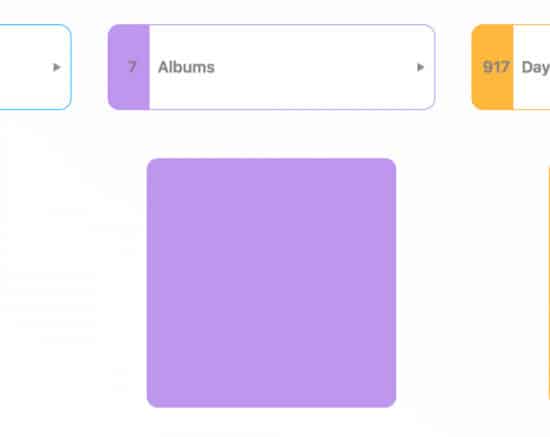Get your calendars out, my fellow organizers, because today we’re scheduling your big organizing project. This is the final piece of the puzzle (aside from actually doing the work)! Before you jump into this article though, I recommend that you read Divide & Conquer, Part 1: Breaking Down a Big Organizing Project, and Divide & Conquer, Part 2: Estimating Time in a Big Organizing Project, so you have an idea of the previous steps. You want to first understand how to break down your projects into phases, and how to estimate the number of hours it’ll take before you start looking at scheduling. Got it down? Then go forth, and schedule!
Remember the Example?
In the last blog post, I gave a sample project for you to follow along with while reading this series. For those of you who don’t remember exactly what that looked like, here it is again:
- Goal #1: Organize
- Phase #1 – 500 Slides (13 hours)
- Phase #2 – 300 Prints (8 hours)
- Phase #3 – 20 Home Movies (3 hours)
- Goal #2: Digitize
- Phase #4 – 500 Slides (11 hours)
- Phase #5 – 300 Prints (2 hours)
- Phase #6 – 20 Home Movies (52 hours)
Your project may look very different from this one, but at least this gives you an idea of what I’m talking about in this article. We’ve broken the project down into its different phases, and we’ve estimated the number of hours it’ll take. Let’s now continue by looking at how we can schedule this project into our calendar to get it done.
What’s Your Desired Completion Date?
In the beginning, it’s good to start with the end. Visualizing the finish line is very important because it gives you a tangible date to look forward to when your project will actually be done. Big projects that take a long time need to have a finish line, or they just drag on and on, and eventually get abandoned. Not good. So channel your inner Quentin Tarantino and start with the end in mind.
What’s the ideal date when you want your project to be completed? You don’t need a written-in-stone deadline just yet, but think about what the ideal scenario would look like…Are you trying to scan your photos because you want to create a family photo book to gift for Christmas? If so, you’re project should ideally be done by November to leave you with enough time to create, order, and wrap the book. Are you creating a Mother’s Day gift? You need to be done by late April.
How Much Can You Manage?
What is the amount of time you can reasonably put into this project? Remember that this project is now a priority. Can you do one hour a week? One hour a day? If you already have a full schedule, you may need to temporarily replace another activity for the duration of the project. Can you delay something else? Find the holes in your weekly schedule (yes, there are there) and bridge the gaps. As an example, let’s say you watch tv for an hour every night. Could you replace this activity with organizing and scanning until the project is done, and instead stream the same show on your commute? As Tim Gunn says, “Make it work!”
Do You Need It Done or Want It Done?
When you think about this final deadline, keep in mind the difference between needing and wanting. You may want your project to be done by a certain date, but is that realistic? Do you actually need it to be done on a specific day, or is it just the ideal scenario? Try to strike the right balance. For our example project, let’s say we’d like to be done by September, so we have a total of 9 months to finish it. Can we do it? Let’s find out!
What’s the Project Duration?
If you are following along with my sample project in Divide & Conquer, Part 2: Estimating a Big Organizing Project (outlined above), you know that we have a grand total of 89 hours of work to finish the project. Having information like this is vital when scheduling your project. Otherwise, you’re just pulling out numbers randomly, and you’re more likely to go over budget both in terms of time and money. Obviously, you don’t need to follow my system for calculating things if you have a better way that works for you; the important thing is that you have a reliable number that you have researched yourself, taking into account all the variables. We’ll use this information when we get to the actual scheduling.
Backtrack Your Timeline
Now that you have a few more specifics, let’s look at the overall timeline to see how long you actually have available to you before the deadline is upon you. Is the deadline 89 weeks away? Then you can complete your project by setting aside one hour a week. Is the deadline 40 weeks away? You need to put in two hours+ a week. If you backtrack your own timeline, does it work with your own lifestyle and busy schedule? Can you reasonably expect to finish it? or will you need outside help to increase your productivity? This is where the red flags should pop up if you’ve done the math.
Moving back to our example project once again, we have a total of 9 months to finish, and a total of 89 hours to fit in. Let’s do the math; 89 over 9 equals 9.88, so we would have to put in 9.88 hours a month to get this done. That’s 2.47 hours per week. Is that manageable? If you only have one hour a week to spare, the answer is no. If you can set aside 3 hours a week, then yes, it’s manageable.
Outsourcing May Be the Key
If you were to outsource the VHS conversion in this project, you could subtract 52 hours of work (or close to it, depending on how long it would take you to drop them off and pick them up), making the total number of hours only 37. If we use this new number, we find that 37 over 9 equals 4.11, or just over an hour of work per week. If you have only an hour to spare, outsourcing is the key to pulling this project off in time. Sometimes, outsourcing is the answer when you have tight deadlines, so don’t write it off as a possibility until you’ve looked at your numbers.

I’m a Perfect Pinnable!
Should You Work in Sequence?
Just like a movie that’s shot out of sequence for budgeting and continuity reasons, you may be working on your project out of sequence. There’s actually nothing wrong by starting with phase 3, if that decision saves you time, effort, and money. Look at your phases and ponder what the ideal workflow looks like for you.
If you’re using the same machine for scanning in two phases (let’s say phases 4 and 6), the logical step would be to complete those two phases after one another instead of putting the machine away while working on phase number 5. It’s all about increasing productivity by putting like with like in your workflow. Setting up and taking down machines takes time too.
Working with Others? Start There.
Perhaps you have decided to outsource one phase of your project (like the home movie conversion in my sample project)? If so, you’d be better off sending those tapes right in the beginning of the project to give enough time for them to be converted before the final deadline. There’s nothing worse than getting a job assignment too close to the final deadline. It puts both you and your colleagues & contractors under stress. In this example, this would translate to starting with phase 3 (organizing the home movie stash) and then moving onto phase 6 (digitizing the home movies) before tackling the rest. Put the ball in the other court early enough for everyone to work at a comfortable speed. Remember that your colleagues or contractors also have schedule limitations in their lives, and respect their boundaries.
Scheduling Phase Deadlines in Your Calendar
By now, you have an overall project deadline, and a timeline for when it needs to be completed. Now you can start thinking about the deadlines for each individual phase. This is so you can measure how you’re project is going as you are working on it, and you can make adjustment as needed along the way.
Do all the phases require an equal amount of time? I’ve found that’s rarely the case. In our example project, we had 500 slides, 300 prints, and 20 home movies, and we saw that the VHS conversion was the real time-sucker. If we look at the project as a whole again, you can see that all the phases take a different amount of time, and so you need to remember that when scheduling your phase deadlines.
- Goal #1: Organize
- Phase #1 – 500 Slides (13 hours)
- Phase #2 – 300 Prints (8 hours)
- Phase #3 – 20 Home Movies (3 hours)
- Goal #2: Digitize
- Phase #4 – 500 Slides (11 hours)
- Phase #5 – 300 Prints (2 hours)
- Phase #6 – 20 Home Movies (52 hours)
Depending on how much time you’re setting aside each week to work on this project, map out some realistic deadlines for each phase. Review the timeline once again to make sure it’s reasonable to have these expectations of yourself. If you’re outsourcing, put deadlines for checking in on the work.
Scheduling in Your Own Work Time
The final step is scheduling in your actual working time. Putting something down on your calendar makes it a lot more realistic than just saying you’ll do it whenever. You need to hold yourself accountable and make an appointment with yourself to actually complete the work.
I know many of my blog readers are small business owners within the fields of organizing, genealogy, and personal history. These are all professions in which you work a great deal independently, often from home. If you have remote clients, scheduling your work time is a crucial step because even though you’re not meeting your client face to face, the work still needs to get done. So grab your calendar, and pencil in exactly when you’ll be working on your project. Block off the time exclusively, and don’t anything else override your decisions. Those appointments are just as important as other meetings you might have in your calendar.
Now, Outsource or Just Do It
Any project will fail if you don’t do the work. It’s as simple as that. Therefore, you really have to decide right from the start if your project is a project you want to take on. If not, it’s OK to say no. Don’t start something you know you can’t finish. If you feel like something else will inevitably draw away your attention, ask yourself if it’s time to bring in a professional organizer. It’s OK to outsource if you need help. Having someone in your corner who can motivate you and guide you as you work though your project can be invaluable. A professional will help you get to the right results faster and delegating away your project may be the better option for you.
If you’d rather tackle the project yourself, be sure to do your due diligence and really look realistically at what you can accomplish, and in what time. Ultimately, the success of your project comes down to you actually doing what you say you are going to do by sticking to your schedule. So make a decision. Either outsource, or just do it.
Summing Up
Pardon the pun, but I felt it was appropriate consider how much math we did in this blog series. 🙂 As you can see, scheduling a big organizing project is completely doable, if you just break it down and estimate it first. There are a lot of variables and other moving parts, but you’ll have a far more accurate timeline, budget, and work schedule if you put pen to paper and work with some real numbers. Is it easy? No, but it can be done if you’re just realistic and hold yourself accountable. Divide & conquer, my friends. Divide & conquer.
What say you readers? Have I done enough to motivate you to tackle your big organizing project?




